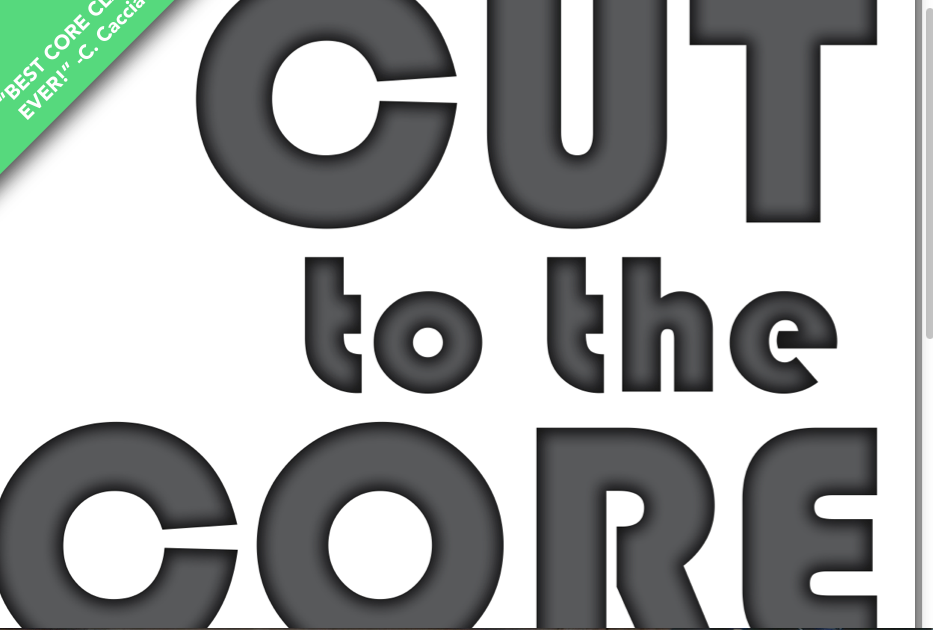My friend Claire is helping whip her new beau into shape, hitting the gym five days a week. Claire also has him doing dozens of sit-ups so he’ll get a movie-star six-pack. For most people the first thing that comes to mind when you say “abs†is one muscle—the rectus abdominis. She means well, but doing hundreds of sit-ups are hard on your back because of devastating loads to your spine. In 2008, there were 3.4 million emergency room visits—an average of 9,400 per day, for back problems, according to the U.S. Department of Health and Human Services. Back problems are the fifth most common reason for all doctor visits in the US. Trading the sit-up for safer and more effective abdominal work can help spare this outcome.
Dr. Stuart McGilll, a professor of spine mechanics and chair of the Department of Kinesiology at The University of Waterloo, points out that spine disks only have so many bends in them before they become damaged. Keep the bends for essential tasks, such a tying shoes, rather than using them in ab training, he recommends. The Army agrees. In 2011, after 30 years, the Army’s Physical Readiness and Combat Tests deemed the sit-up test as an ineffective assessment of a person’s core in relation to their battle strength.In sports that require repeated hyperextension—like gymnastics, diving, volleyball, weight lifting, golf, football, tennis and rowing—the incident of back injury is 11 percent, according to the International Journal of Applied and Basic Sciences. In football lineman, it may be as high as 50 percent. The types of injuries vary with age. In adolescent athletes, nearly 70 percent of lumbar spine injuries occur when forces are exerted on skeletally immature spines, whereas the majority of adult back injuries are related to muscle strain and disc disease.
If you want a stronger, tighter core, instead of full sit-ups, try the traditional crunch or many variations of a curl-up. Lifting your head and shoulders a few inches (around 30 degrees) off the floor and holding briefly is a good exercise to challenge the abdominal muscles while imposing a minimal load to the lumbar spine
Muscle function
The four layers of abdominal muscles are like a woven basket encompassing the belly. The long vertical rectus abdominis runs vertically from the sternum to the pubis crest and is trained when you do an exercise such as the crunch. The external and internal oblique muscles rotate and side-bend the trunk. The deepest layer, right below your belly-button, named the transversus abdominis, plays a significant role in stabilizing the trunk, specifically the spine, during all movement. All the abdominal muscles hold in our organs and help us in forced exhalation, as in coughing, urinating or giving birth. But the most critically important function throughout the day—writes Judith Lasater, Ph.D., P.T., author of Yoga Abs Moving From Your Core—is stabilization, to keep the back free of pain and the abdomen strong.
Very few sports require fully flexing the spine, as in a full sit-up. Rather, the core transmits power from the hips through the torso as in pitching a ball or running. Here, the abdominals work together with muscles in the lower back, hips and pelvis, known as the core, stabilizing the spine. The core and spine can handle large forces vertically, but not in extreme flexion, as in sit-ups, twisting or bending.
For example, a 154-pound man standing upright has 154 lbs. of pressure on the L3-L4 disc, which the spine can easily handle. Sitting and bending forward 20 degrees, the pressure on L3-L4 bumps up to 264 lbs. In the bent-knee sit-up the pressure almost triples, up to 396 lbs. Simply modifying the sit-up to a partial curl-up, with the head and shoulders lifting a few inches off the floor, eliminates these huge compression forces on the discs.
In a June 2009 New York Times article titled “Core Mythsâ€, the marginalized view of the core being “abs “was challenged by McGill. He compares the spine to a fishing rod supported by muscular guy wires. If all the wires are tensed equally, as in the whole lumbo-pelvic-hip complex, the rod stays straight. A core exercise program should emphasize all the muscles that girdle the spine, not just the abs, to ensure balanced strength. In his lab, he’s demonstrated how an average sit-up can exceed the limit known to increase the risk of back injury in normal American workers.
The full sit-up is three muscle actions: neck flexion, spine flexion and hip flexion. It’s important to be able to sit up, no doubt, but repeated sit-ups do place hundreds of pounds of compression on the lumbar disks. Hooking or holding the feet down stresses the low back even more. Ironically, the bent-knee sit-up has been taught to minimize the action of the hip flexor in the sit-up, though it is not correct. The abs can only curl the trunk. The sit-up is a strong hip flexor exercise (used in climbing stairs or skipping), whether the knees are bent or straight.
McGill says that the following three exercises, done regularly, can provide a well-rounded, core-stability program: practice the curl-ups, learn how to do a side-plank (lie on your side and raise yourself in a straight line) and try the bird-dog (kneel on your hands and knees, legs hip-width apart, raise an alternate arm and leg to hip height and hold for four or six seconds).
Claire tried all three, smitten over both the planks and her slim new guy.


